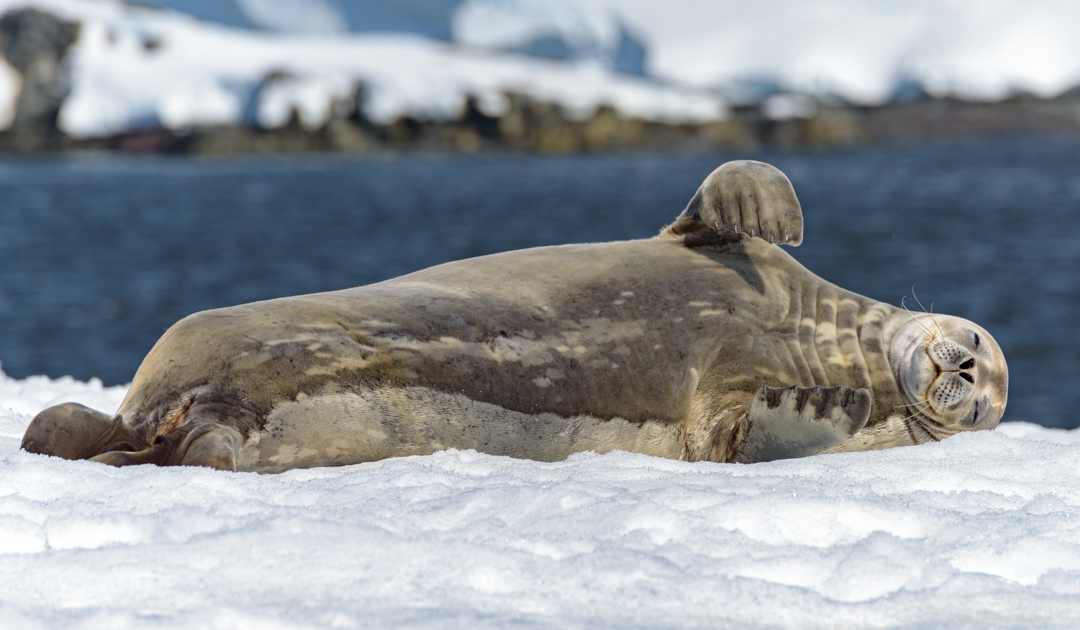
Seals are mammals that live (almost exclusively) in the sea and are perfectly adapted to the water habitat. Their bodies are more or less streamlined, depending on the species, and with their flippers they glide and maneuver through the coastal waters of the oceans almost as elegantly as birds in the air. Evolutionarily, they are descended from four-legged land predators that specialized in aquatic hunting 20-25 million years ago. Because of the different swimming styles of the various seal species – true seals (phocids) tend to use their rear flippers for propulsion, eared seals (otariids) tend to use their front flippers, and walruses use both front and rear flippers – it had long been assumed that the three seal families each evolved from a different land-dwelling ancestor, which genetic studies disproved. Now, in a recent interdisciplinary study, biologists and engineers have analyzed the different swimming styles of true and eared seals and deciphered why these two ways of swimming evolved.
European seals (including harbour seals, grey seals, bearded seals) all belong to the phocid family, which mainly use their hind flippers for locomotion and their short, clawed front flippers for manoeuvring. Eared seals, on the other hand, which include sea lions and fur seals, have large, wing-like front flippers that generate propulsion. The scientists wanted to find out how such different swimming styles could evolve within the same group of animals and took a closer look at the swimming behavior and flipper anatomy of grey seals(Halichoerus grypus), New Zealand fur seals(Arctocephalus forsteri), leopard seals (Hydrurga leptonyx) and crabeater seals(Lobodon carcinophaga). In their study, led by Monash University in Melbourne, Australia, they used state-of-the-art computer simulations along with video footage of swimming seals to solve the evolutionary puzzle surrounding the two types of swimming.

Lead author Dr David Hocking, from the Monash University School of Biological Sciences, worked with engineer Dr Shibo Wang, from Monash University’s Department of Mechanical and Aerospace Engineering, to use sophisticated fluid dynamics simulations to show how water flows around the seals’ differently shaped flippers.

(D): Use of the stretched and turned forelimbs as a brake.
(E): Use of the spread hind flippers as rudders when turning. Again, the structure of this behavior is similar in all species. Photos: Hocking et al. 2021, Current Biology
“Our analysis showed that some Antarctic seals, like leopard seals, actually have very streamlined, wing-like forelimbs, despite being from the ‘foot-propelled’ seal family,” Dr Wang said. Video footage of leopard seals, which are members of the true seal family, from Taronga Zoo in Sydney clearly showed that the animals use their forelimbs in a similar way to the otariid seal species fur seal and sea lion.
With this discovery, the researchers were able to show that the flipper shape evolved convergently in different seal species, meaning that similar flipper shapes with the same function evolved in the course of evolution in the unrelated species leopard seal and sea lion.
“Wing-like flippers help leopard seals to surge forward and ambush fast-swimming penguins”, says Associate Professor Alistair Evans, who also worked on the study, “and it seems likely that the earliest sea lions also needed this extra speed to capture their preferred prey: schooling fish.”

As well as providing insight “into the early evolution of swimming in seals”, as Dr Evans says, the study also provides new, practical insights for human applications: “Seals have had millions of years to perfect their swimming, and they can teach us a thing or two about underwater grace and elegance,” explains Dr Hocking. “Learning from them may help us to improve the design of human-built machines like underwater drones and submersibles, increasing their speed, manoeuvrability or energy efficiency.”
Julia Hager, PolarJournal
Link to the study: David P. Hocking et al . 2021, Current Biology 31 (1-6). Convergent evolution of forelimb-propelled swimming in seals. DOI: https://doi.org/10.1016/j.cub.2021.03.019
More on the subject:





